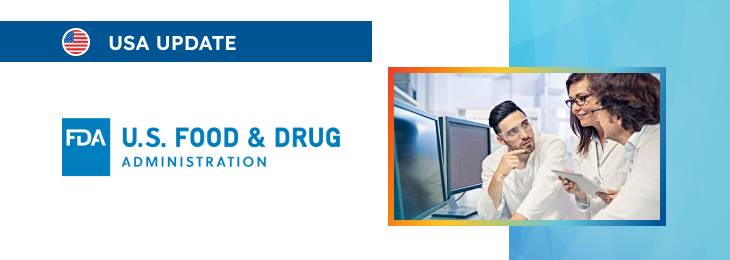The new article provides a general overview of the Q-submission process as the relevant legislation prescribes.

Table of content
The Food and Drug Administration (FDA or the Agency), the US regulating authority in the sphere of healthcare products, has published a revised draft guidance document dedicated to the Q-Submission program introduced to provide medical device manufacturers and other parties involved with the opportunity to obtain substantive feedback from the authority.
Once finalized, the guidance will provide non-binding recommendations and clarifications to be considered by the relevant stakeholders to ensure compliance with respective regulatory requirements.
At the same time, it is essential to mention that FDA guidance documents are non-binding in their legal nature, nor are they intended to introduce new rules or impose new obligations.
Moreover, the authority explicitly states that an alternative approach could be applied, provided such an approach is in line with the existing legal framework. It has been agreed with the authority in advance.
The Q-Submission (Q-Sub) Program facilitates crucial interactions between the FDA and entities seeking regulatory feedback for medical devices.
It serves as a bridge for premarket discussions, allowing for a structured exchange of information and feedback outside traditional submission pathways.
Submission Content
First of all, the document outlines the essential components of a Q-Sub cover letter. According to the guidance, a well-prepared cover letter is key to a successful Q-Sub.
It should include:
- Contact Information: Full company details and contact person(s), including titles and communication details.
- Q-Sub Type: Specify the requested Q-Sub type, ensuring that only one type is included per submission.
- Method of Feedback: Clear indication of the preferred feedback method, especially for pre-submissions and SIRs, which can vary in written feedback or meetings.
- Meeting Information: For submissions that involve meetings, details such as a draft agenda, preferred dates, meeting format, and attendee information should be provided to facilitate scheduling.
The central part – the body of the submission – should clearly articulate:
- Purpose: Goals and expectations from the interaction.
- Device or Product Description: Comprehensive details of the device, including its functionality, underlying scientific concepts, and significant characteristics. Manufacturing process details should be included if relevant to safety and effectiveness.
- Proposed Indications for Use or Intended Use: Description of the conditions the device aims to address and the target patient population.
- Regulatory History: A summary of prior communications with the FDA regarding the device, including feedback received and resolutions.

Submission Process and eCopy Requirements
The guidance further provides an overview of the submission process and highlights the key points associated to it.
According to the guidance, Q-Subs must comply with eCopy requirements outlined under section 745A(b) of the FD&C Act.
The FDA also provides a voluntary electronic Submission Template and Resource (eSTAR) for Pre-Subs, aimed at streamlining the submission process.
- Submission to CDRH: Electronic submissions via the CDRH Portal are preferred, though mailing to the CDRH Document Control Center (DCC) is also accepted.
- Submission to CBER: Submissions can be made electronically through the FDA Electronic Submission Gateway, the CBER submission email inbox, or via mail to the CBER DCC.
It is also important to mention that the FDA review clock starts upon receipt of a valid eCopy or an eSTAR submission that has passed technical screening.
For Q-Subs undergoing acceptance review or technical screening, the review clock begins once the submission is officially accepted.
Timelines and Review Considerations
When planning a Q-Sub, it is crucial to consider the FDA’s review timelines and ensure that proposed meeting dates provide sufficient time for FDA preparation and review.
The timelines for different Q-Sub types, such as Pre-Subs, SIRs, and Informational Meetings, should be consulted to propose feasible dates.
If the initially requested dates cannot be accommodated, the FDA will propose alternative dates within a reasonable timeframe.
Conclusion
The draft guidance issued by the FDA provides further detailed clarifications regarding the Q-Submission Program introduced to improve communication between the authority and key stakeholders interested in placing their products on the market. The document outlines the most critical aspects of the Q-Submission process, including the content of the submission, the review process itself, and the relevant timelines.
How Can RegDesk Help?
RegDesk is a holistic Regulatory Information Management System that provides medical device and pharma companies with regulatory intelligence for over 120 markets worldwide. It can help you prepare and publish global applications, manage standards, run change assessments, and obtain real-time alerts on regulatory changes through a centralized platform. Our clients also have access to our network of over 4000 compliance experts worldwide to obtain verification on critical questions. Global expansion has never been this simple.

